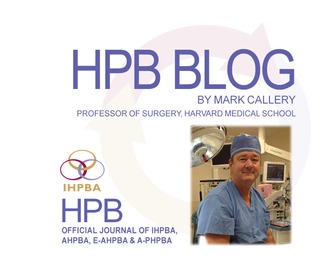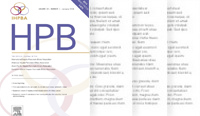International Hepato-Pancreato-Biliary Association
HPB Blog, November 2016

Welcome to the November 2016 issue of HPB now available on-line with many exciting features! It provides a great mix of topics from thought leaders in our field. More importantly though, you’ll enjoy great original work from around the world that has been brought to even higher quality and impact through our rigorous and determined editorial process. Hats off and thanks to all peers who review and help us select such high quality content! If you’ve yet to participate and would like to, contact any of us and we’ll get you involved.
Two articles come from the US Extrahepatic Biliary Malignancy Consortium. Beal et al examine preoperative neutrophil-lymphocyte ratios (NLR) for their prognostic value in outcomes after curative-intent resections of gallbladder and extrahepatic cholangiocarcinomas. Because higher NLR’s correlate with worse oncologic outcomes, the authors endorse the prognostic value of this simple clinical measure. Margonis et al detail what happens after curative-intent resection of gallbladder cancer in the largest Western such study reported to date. One-third of patients recur within two years again emphasizing the threat of this disease and framing issues related to followup and prognosis.
Another two articles consider long term outcomes following hepatectomy for benign and malignant liver neoplasms. Van Rosmalen et al of Amsterdam detail through cross-sectional study whether resection for symptomatic but benign liver tumors actually provides relief long term. It does, but some trade tumor symptoms for incision-related problems. Zhao et al of Hefei, China scrutinize short and long-term outcomes after resection of large (>5cm) hepatocellular carcinomas, and indicate that while some will survive, true cure is rare. Interested in the outcomes of imaging surveillance for BD-IPMN? Khaled et al of Leeds reassure us that longer interval MRI imaging is just as safe, and certainly less costly, when monitoring BD-IPMN lacking “worrisome features”.
Four articles help you understand more about risk prediction in HPB disease. Poruk et al from Johns Hopkins provide a new validated risk score to predict surgical site infections after pancreaticoduodenectomy (PD). I offer some thoughts on this in an Editor’s highlight. Bergquist et al use ACS-NSQIP data to link risk to clinical indication for PD in elderly patients, and indeed those risks vary. Olthof et al examine how early postoperative alterations in serum transaminase levels after liver resection predict the risks of morbidity and mortality ahead. Finally, a terrific article from a plenary session at IHPBA Sao Paolo will help you advise some patients that their planned laparoscopic cholecystectomy will likely require conversion to open. On behalf of the UK CholeS study group, Sutcliffe et al provide a validated risk score (derived from 8820 patients!) just for this purpose. Of course, no risk model is perfect. But, the more you know going in, the better you and your patients might do coming out.
And so, enjoy your November issue! HPB continues to be a journal on the rise that supports and enriches a global community. This depends on quality contributions, peer-review and editorial efforts, and the new support and excitement provided us through Elsevier. Yes, most readers will benefit through education, scholarship and professional development. But, the greater good we all seek is making our patients the real beneficiaries of HPB.
Mark P. Callery, MD
Harvard Medical School
Click here for the Table of Contents
Corporate Partners
If you are interested in becoming a Corporate Partner of the IHBPA please contact industry@ihpba.org
Find out more


